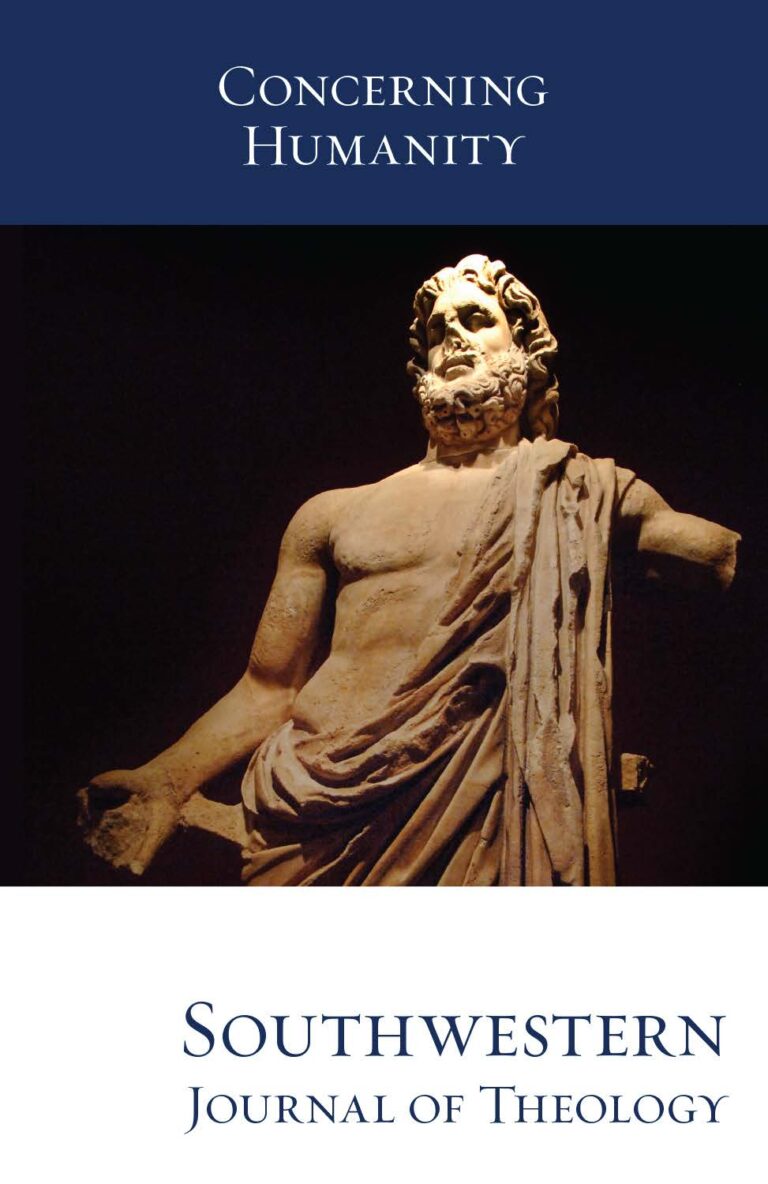
Concerning Humanity
Southwestern Journal of Theology
Volume 59, No. 1 – Fall 2016
Managing Editor: W. Madison Grace II
Edited by Matthew S. Harmon and Jay E. Smith. Grand Rapids: Zondervan, 2014. 320 pages. Hardcover, $49.99.
Studies in the Pauline Epistles is a festschrift for Douglas Moo edited by two of his former students, Matthew Harmon and Jay Smith. The articles focus on two areas in which Moo had his most significant scholarly impact: Pauline studies and Bible translation. This volume is divided into three parts: (1) exegesis of the letters of Paul, (2) Paul’s use of Scripture and the Jesus tradition, and (3) Pauline scholarship and its contemporary significance.
The first section, exegesis of the letters of Paul, begins with Ardel Caneday’s article, where he argues that the phrase “will . . . reign in life” in Romans 5:17 refers to “the believer’s present dominion over sin in these mortal bodies” (28). This is followed by Chris Valchos, who argues that in Romans 6–7, “deliverance from the law and its catalytic function occupies a seminal place in [Paul’s] teaching regarding moral transformation” (48). Next, Moo’s son, Johnathan Moo, argues that Paul transforms family relationships around his view of God and his love, which he describes quite well as “a counter cultural model” (61). Smith provides the next article, where he attempts to persuade Moo (and potential readers) that 1 Corinthians 6:18b constitutes a Corinthian maxim. Following Jay Smith, D.A. Carson examines the various reconstructions of the background of Galatians 2:11–14 and argues that the best understanding of οἱ ἐκ περιτομῆς refers to unconverted Jews who were persecuting Christians in Jerusalem. To finish part one, Verlyn Verbrugge argues that in light of the construction μὴ . . . μόνον ἀλλὰ νῦν, in Philippians 2:12 the phrase “not only in my presence, but now much more in my absence” modifies the imperative, κατεργάζεσθε, rather than the preceding indicative, ὑπηκούσατε.
Part two, “Paul’s Use of Scripture and the Jesus Tradition” (127), begins with Craig Blomberg’s article, “Quotations, Allusions, and Echoes of Jesus in Paul.” Here, Blomberg uses Richard Hay’s criteria for detecting Old Testament allusions in Paul to detect Pauline allusions to Jesus tradition. Next, Matthew Harmon adds to the debate surrounding Paul’s use of the Old Testament in Galatians 4:21–5:1. He argues that instead of the usual either/or proposed here between allegory and typology, Paul is employing both methods. Osborne follows with his contribution, where he reverses his previous view on Paul’s change of “received gifts” in Psalm 68:18 to “gave gifts” in Ephesians 4:7. He argues that this change is warranted based on the psalm as a whole.
Part three, “Pauline Scholarship and His Contemporary Significance” (179), begins with Robert Yarbrough, who argues that a salvation-historical approach to Paul is both beneficial and necessary to the interpreter. Beale follows by overviewing elements of Paul’s eschatology that relate primarily to the idea that “the latter days” had already begun in Paul’s time. The next two articles bear highly descriptive titles, James Dunn’s “What’s Right about the Old Perspective on Paul,” and Stephen Westerholm’s “What’s Right about the New Perspective on Paul.” N.T. Wright follows, arguing that a good translation of δικαιοσύνη θεοῦ should allow the reader to hear the resonant meaning, “covenant faithfulness,” when reading it (250). Next, Thomas Schreiner discusses Paul’s idea of truth and its relevance for postmodern culture. Mark Seifrid ends the volume by highlighting the contemporary application of Paul.
As a work honoring Douglas Moo, this volume fulfills its aim. In it, the authors engage in the contemporary debates surrounding Pauline studies and problems of translation, adding valuable insights to both fields. One of this book’s overall strengths is that the contributors take widely divergent views, something that will be beneficial for students becoming acquainted with this area of study. Two articles are helpful here, “What’s Right about the Old Perspective on Paul” by Dunn and “What’s Right about the New Perspective on Paul” by Westerholm. These authors argue that there is some validity to their opponent’s view and this in an area where authors seldom engage opposing views.
One article in particular stood out as an important contribution. Blomberg’s article, “Quotations, Allusions, and Echoes of Jesus in Paul” is a much needed critique of Hays’ assertion that it is difficult to prove that Paul had any knowledge of a Jesus tradition. By taking Hays’ own criteria for detecting allusions, he showed that not only is it possible that Paul knew a Jesus tradition, but that applying Hays’ method consistently nearly requires one assent that Paul knows that tradition. This adds a new point of legitimacy to a once-discarded theory.
While overwhelmingly positive in its contribution, one negative critique is noted. Beale’s article, itself a helpful reminder of the already/not-yet concept in Paul, has some drawbacks. In some places, Beale asserts his ideas with no citation of Paul or other scholars to support his views. This is particularly striking in his assertion that the Sabbath continues and has been moved to Sunday (209). Also, when discussing justification, a central point of debate in Pauline studies, he provides a definition without at least acknowledging different views (207).
On the whole, however, this book is a positive contribution to Pauline studies. As mentioned above, it will aid the student who is entering this field by providing opposing views on Pauline studies. In addition, some articles, such as Blomberg’s, constitute valuable contributions to the field. Studies in the Pauline Epistles, then, is a fitting tribute to Douglas Moo.





